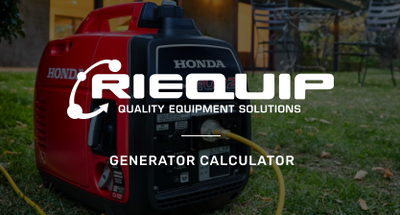How to Prime a Petrol Powered Water Pump: A Step-by-Step Guide
Water pumps are essential tools for efficiently managing water flow in various settings, from agricultural uses, construction sites to residential properties. For those utilising petrol (and diesel) engine-powered water pumps, priming is a crucial step to ensure the pump operates effectively and avoids damage. Today, we're diving into a simple guide to help you prime your petrol-powered water pump like a pro.
What is Priming, and Why is it Important?
Priming a water pump means filling the pump and suction hose with water, eliminating any air. This process is essential because petrol-powered water pumps are not capable of pumping air. When a pump runs dry (without water), it can overheat and suffer severe damage, potentially leading to failure of the pump's internal components.
Tools and Materials Needed
- Clean water
- A bucket or source of water
- A hose
Step-by-Step Priming Process
Step 1: Ensure Safety First Before starting your petrol-powered water pump, make sure it’s on a stable, level surface and that you’re operating in a well-ventilated area. Check the pump’s oil and fuel levels are adequate.
Step 2: Connect the Hoses Attach your suction hose to the pump’s intake valve and ensure it’s tightly secured with no leaks. We recommend using camlock connectors to ensure there is no leaks. Connect any discharge hoses you plan to use.
Step 3: Fill the Pump with Water Use a bucket or a similar container to fill the pump casing with clean water. Continue filling until water reaches the top of the pump housing. This step is crucial to create an initial water seal necessary for the suction process.
Step 4: Check All Connections Before starting the engine, double-check all connections for tightness and ensure there are no kinks in the hoses that might impede water flow.
Step 5: Start the Pump With everything connected and primed, start the pump according to the manufacturer’s instructions. It should now begin to pump water. If the pump does not start to move water after a few minutes, stop the engine, check all connections and steps again, it is most likely sucking air through one of the connections, to fix this - smear grease around all connections on the suction hose and pump inlet and attempt to re-prime if necessary.
Step 7: Monitor the Pump Once your pump is running, keep an eye on its performance. There should be a steady flow of water through the discharge hose. If you notice any drop in performance, stop the pump to check for air leaks or blockages in the line.
Troubleshooting Common Issues
- Air Leaks: Check connections if your pump isn’t priming; even a small air leak can prevent the pump from priming.
- Clogged Suction Hose: Ensure the hose is free from debris. A filter or strainer at the intake can prevent this issue.
Priming your petrol-powered water pump properly will extend its lifespan and ensure efficient operation. Always refer to your specific model’s manual for detailed instructions tailored to your pump’s design and capabilities.


